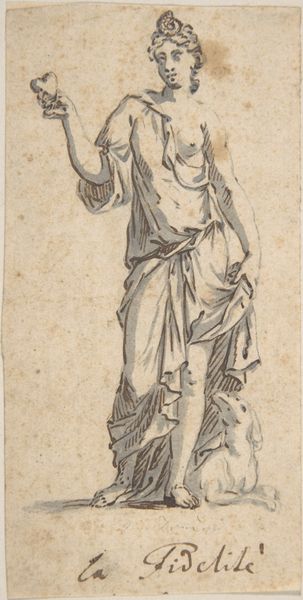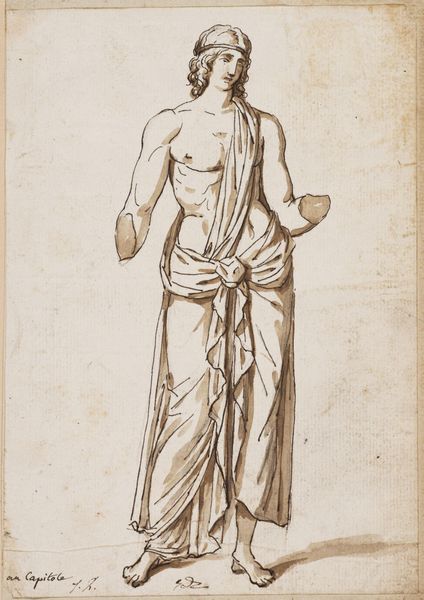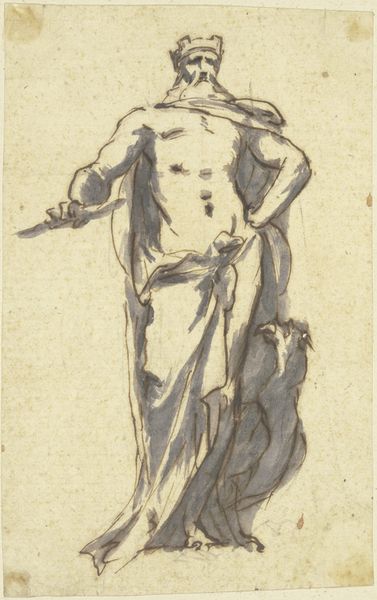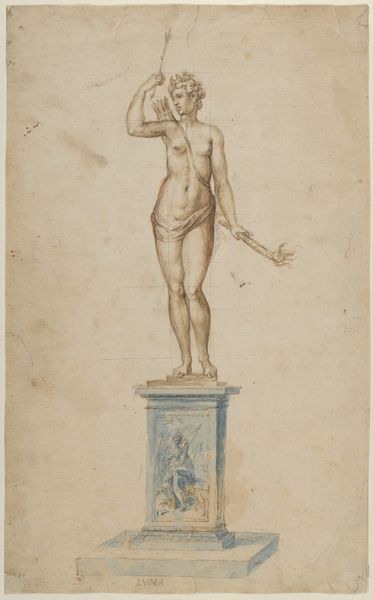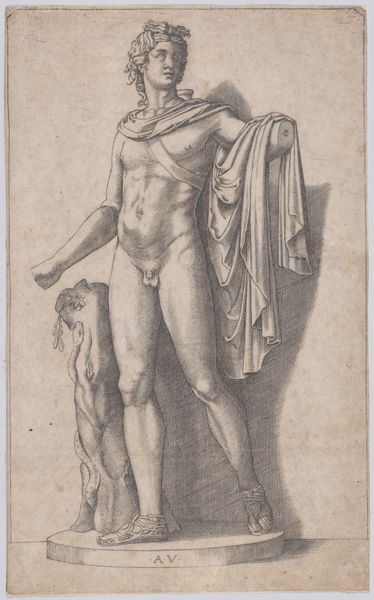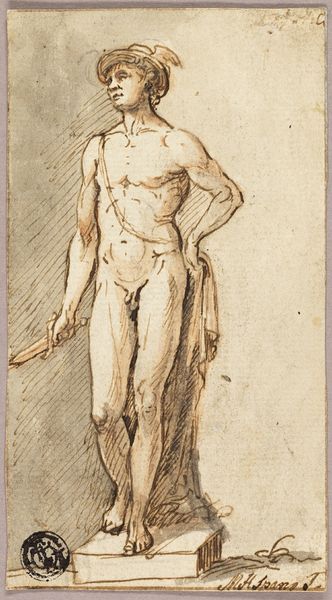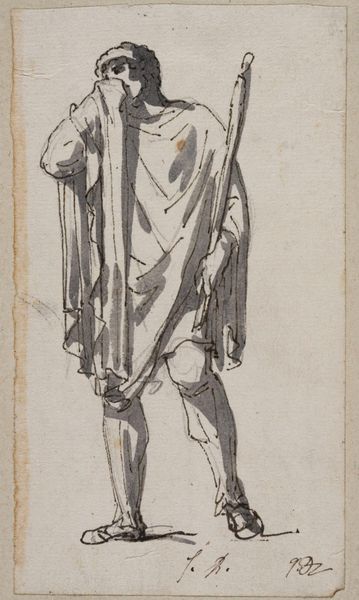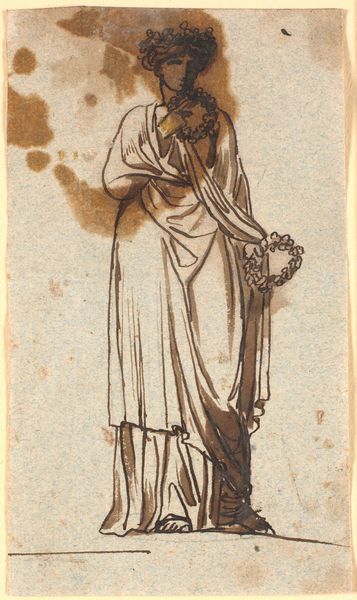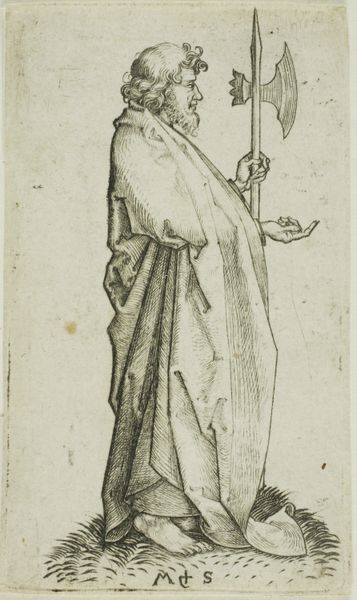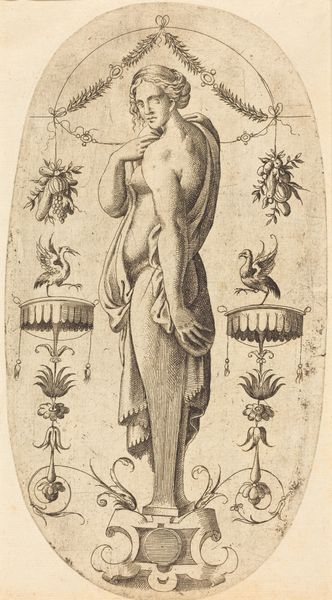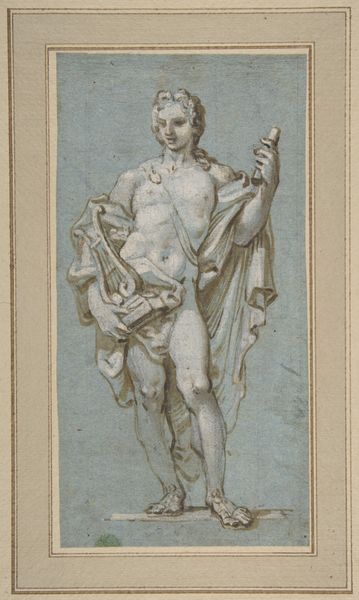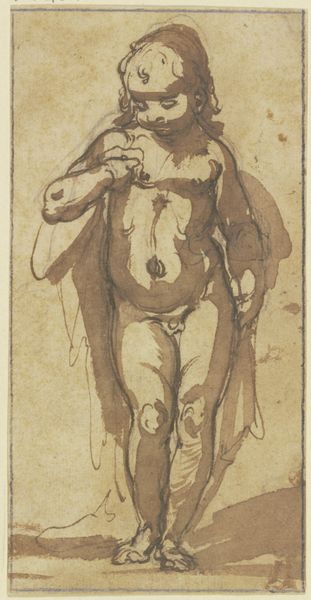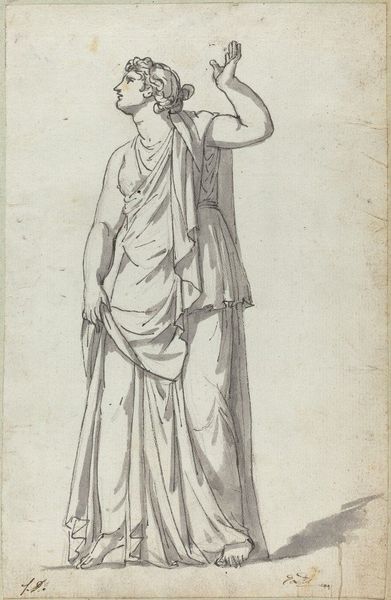
drawing, print, ink, pen, charcoal
#
portrait
#
drawing
#
neoclassicism
# print
#
charcoal drawing
#
figuration
#
ink
#
pen
#
charcoal
#
history-painting
#
academic-art
#
nude
Dimensions: 221 × 132 mm
Copyright: Public Domain
Curator: Before us is "Bacchus", an undated drawing attributed to Giovanni Battista Cipriani, currently held at the Art Institute of Chicago. The piece employs pen, ink, and charcoal. What's your initial read of the piece? Editor: Well, right away, the figure’s serenity strikes me. It is Bacchus, the god of wine, ecstasy, and theatre but not as the often riotous figure; there's a poised tranquility, almost melancholy, that’s quite compelling. He stands in contrapposto and yet I can almost feel that the image should carry more power or movement given that we expect energy with Bacchus! Curator: It is an intriguing portrayal, especially given the Neoclassical style Cipriani employs. We should note that this era in art prized order and idealized form. Cipriani helped to shape British Neoclassicism in no small way, training a generation of artists during his tenure at the Royal Academy. He certainly was steeped in the artistic principles prevalent at the time. The prevalence of drawings like this further reflects how the Academy training system placed the ability to draft under immense value. Editor: Exactly! I see that academic rigor reflected, but there's also the ever-present symbolism. Bacchus carries the thyrsus, of course – that staff topped with a pinecone, a symbol of fertility and the power of nature but that's the main clue for the figures identity given he lacks other common symbols! And in his other hand, what looks like a libation cup, likely for pouring offerings to the gods and perhaps as a suggestion that Dionysus, like all deities of ecstatic liberation, can provide both poison and salvation. Curator: And don't forget the garland of leaves, an iconic element linking back to nature worship! We have to consider the role such representations played in disseminating classical ideals during the rise of European academies and their emphasis on the revival and emulation of antiquity. The visual culture shaped public understanding and taste. Editor: Precisely! We often forget how the meanings attached to these archetypes – the drama of gesture, the weight of symbolic objects – accumulate over centuries. Curator: It becomes clear that this isn’t merely an image of a mythological figure, but it participates in a long lineage of artistic and cultural exchange. Editor: An echo that subtly resonates across time. Curator: And that echo continues to prompt thought. Editor: Indeed.
Comments
No comments
Be the first to comment and join the conversation on the ultimate creative platform.
